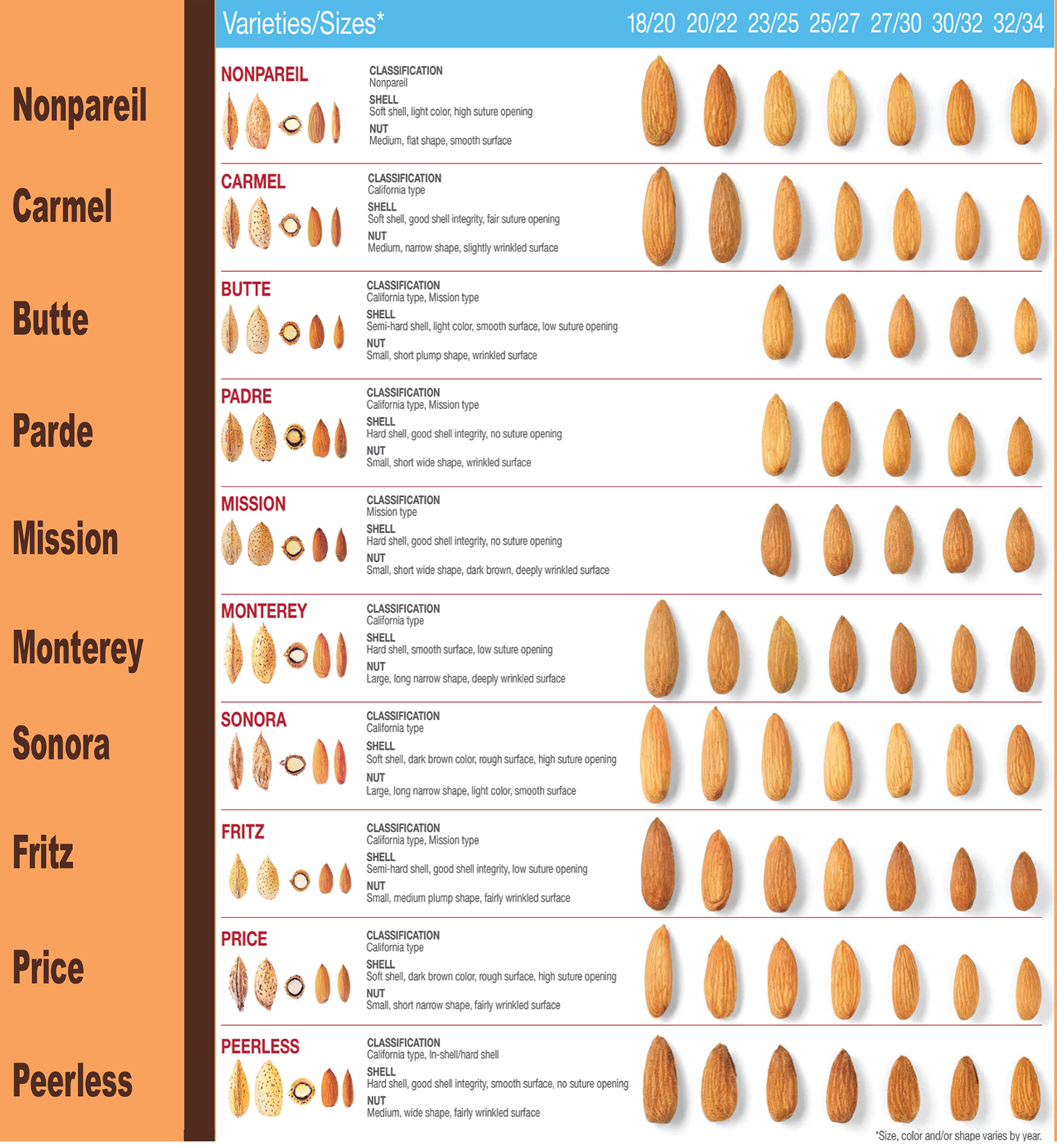CALIFORNIA ALMONDS
Since ancient times, almonds have been prized throughout the world for their delicious taste, crunchy texture, and increasingly, for their nutritional value. California is the world’s largest producer of almonds. With its ideal growing conditions, including a mild climate, rich soil, and abundant sunshine, this area produces about 80% of the global almond supply, exporting to nearly 90 countries. To ensure a consistent, high-quality, wholesome product year-round, state-of- the-art equipment and specialized techniques for growing, harvesting, processing, and packaging are used.
The California Almond industry respects the environment and keeps consumer health in mind, with food safety and quality assurance programs in the orchard and in processing and packaging California Almonds are highly versatile and available in numerous varieties and forms suitable for diverse product applications.
THE ALMOND BOARD OF CALIFORNIA
The Almond Board of California was established in 1950 by the US Congress to administer a grower enacted Federal Marketing Order under the supervision of the US Department of Agriculture.
The Almond Board’s mission is to create a rewarding environment for the production, processing, and marketing of California Almonds. Efforts focus on expanding domestic and international distribution, consumption, and usage of almonds by funding a variety of generic activities that benefit the industry. The Almond Board is funded by an annual assessment on the marketable kernel pound eight of almonds.
Program activities include such critical unctions as domestic and international marketing; nutrition, production, and environmental research; food quality and safety initiatives; monitoring trade and Market access issues; and analysis and dissemination of industry statistics. The Almond Board of California does not establish commodity prices.
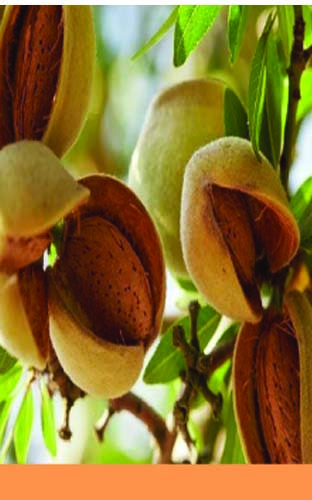
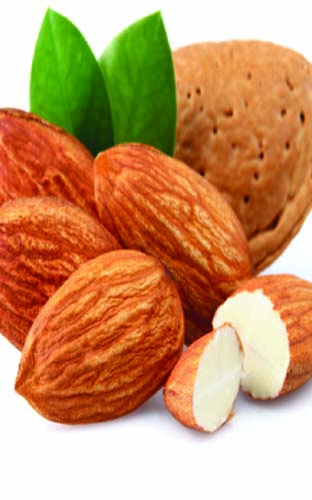

Overview of the California
Almond Industry
Six thousand growers carefully tend to more than 700,000 acres (283,000 hectares) of almond orchards throughout cenetral California, region noted for its idea growing climate. Hot, dry summers and cool, rainy winters help provide steady supply of wholesome California Almonds. California is the only place in the United States where almonds are commerically grown.
ALMOND SEASONS
Like nectranes, peaches, plums, the almond is catorized botanically as a fruit. Almonds are classified as either sweet (Anygalus communis L. Var amara but only sweet are grown in California. Almonds grow on trees that blossom from Mid february through March. These trees are self pollinating, so bees have no important role. For tree to produce varities they must be planted in alternating rows.
Almonds develop a shell that is surrounded by a hull ( analogous to the fleshy part of a peach. Over the summer, as the nuts mature, the hulls dry asnd split open. revealing a shell that encases the nut.
These nuts naturally in the shell before they are harvested. Between Mid August and October, almonds are harvested mechanical tree “shakes” which knocks the almons, still in their hulls, to the ground. The nuts are then gatheredand delivered for processing. Where the next step is to clean and sort Finally they are sold across the globe to customers like you.
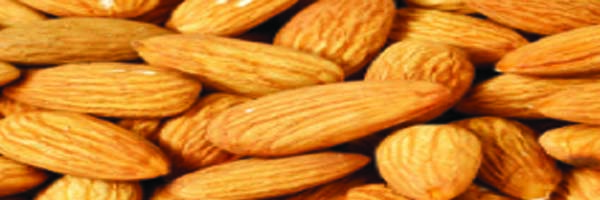
U. S, Fancy
The highest grade – typically appropriate for products where the visual appeal of the almond is critical to application
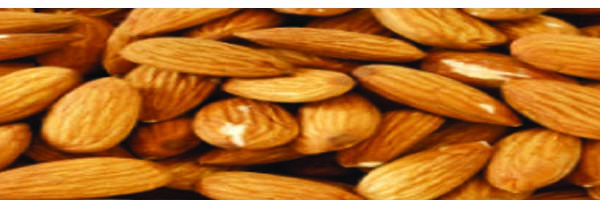
U.S. Extra No. 1
Simialr to U.S. Fancy – ideal for food applications where the apperance of the almond is ‘ very important
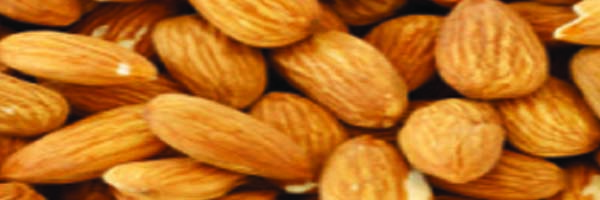
U. S, No. 1
Sometimes refered as supreme and often used for whole almond applications or for furthher processing like blanching or roasting

U. S, Standard Sheller Run
Good gread for further processing, such as blanching, dicing, grinding, or paste, particluartilty, where a higher level of split and broken is not a concern

U.S. Select Sheller Run
Mid-quality grade-good choice for applications where the almonds with minimal sorting/ processing can be incorporated with other ingredients for example inside a confectionery product a higher level of chipped and scratched kernel is accepted. Also approiate for further processing such as blanching, grinding blanching , roasting, dicing, and slicing
Whole – Natural or Blanched
Typical Uses:
- Natural almonds: versatile and suitable for all-around use
- Blanched: works well as an attractive garnish, either as is or roasted to bring out the flavor and color
- Natural, roasted or flavored snacks
Embedded or enrobed in chocolate - Ingredients for confectionery, energy bars, bakery
- Inputs for processing
Nutrition Facts
| Calories 6.9% | Calories from Fat 130 | |||
| % Daily Value* | ||||
| Total Fat 0.6ggrams | 0% | |||
| Saturated Fat 0.6ggrams | 0% | |||
| Trans Fat 0 grams | ||||
| Polyunsaturated Fat 0.1 grams | ||||
| Monounsaturated Fat 0.4 grams | 0% | |||
| Cholesterol 0mgmilligrams | 0% | |||
| Sodium 0 mgmilligrams | 0% | |||
| Potassium 8.8mgmilligrams | 0% | |||
| Total Carbohydrates 0.3 grams | 0% | |||
| Dietary Fiber | 1% | |||
| Sugars | 0.1 grams | |||
| Protein | 0.3grams | |||
| Vitamin A | 0% | |||
| Vitamin C | 0% | |||
| Calcium | 0.3% | |||
| iron | 0.3% | |||
*Precent Daily Values are based on 2,000 calorie diet.
7 Benefits from consuming Almonds
01.A Great Source Of Many Nutrients
02.Loaded With Antioxidants
03.May Aid Weight Loss
04.May Lower Cholesterol And Triglycerides
05. Beneficial for Type 2 Diabetes And Metabolic Syndrome
06.May Reduce Inflammation
07. High In Beneficial Fiber















